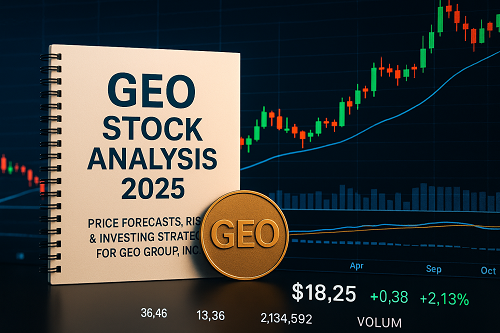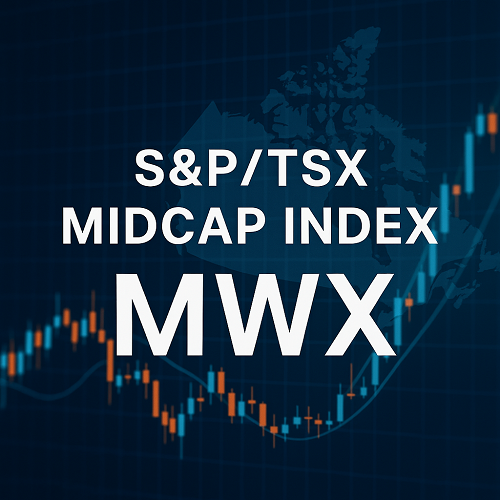GEO Group, Inc. (ticker: GEO) is a company operating within the corrections, detention, and rehabilitation services sector, often entwined with politics, regulation, and public policy. For investors considering geo stock, this analysis delves deep into GEO’s fundamentals, valuation, catalysts, technicals, and risks to provide a holistic, actionable view for 2025.
Understanding GEO is not just about balance sheets—it’s about contracts, litigation, regulation, government budgets, and public scrutiny. Our aim: present a richer, more SEO-friendly, up-to-date resource than most “stock quote” pages to capture investor interest and search traffic.
Company Overview & Business Model
Operational Segments
GEO operates across several business lines:
- U.S. Secure Services — managing correctional, detention, and prison facilities under contracts
- Electronic Monitoring & Supervision Services — monitoring, tracking, reentry supervision
- Reentry Services — rehabilitation, educational, vocational, substance-use programming
- International Services — correctional and facility management outside the U.S.
These segments integrate to offer a “full stack” solution from incarceration to supervision, anchored by long-term government contracts.
Recent Business Developments
- In August 2025, GEO announced a $300 million share repurchase program, signaling confidence in undervaluation.
- GEO sold its company-owned Lawton Correctional Facility in Oklahoma for ~$312 million to recycle capital.
- GEO’s subsidiary BI Incorporated won a contract from U.S. Immigration & Customs Enforcement (ICE) under its Intensive Supervision Appearance Program.
- The company is being awarded new management contracts in Florida.
Such contract awards and capital recycling moves could materially affect growth, margins, and investor sentiment.
Recent Performance & Market Context
Stock Price History & Range
- As of October 2025, GEO is trading around $18.25 (give or take) in the ballpark of a 52-week range between $13.36 and $36.46.
- Year-to-date, the stock has seen declines, though parts of that are retracements from previous peaks.
Key Financial Metrics
| Metric | Value / Range | Notes |
|---|---|---|
| Market Cap | approx. $2.5B | mid-small cap range |
| P/E (Trailing) | ~ 28-30x | based on latest EPS |
| EPS (TTM) | ~ 0.60-0.65 | corporate earnings performance |
| Revenue | ~ $2.45B (TTM) | core top line scale |
| Net Income | ~$88M | delivers ~3–4% net margin |
| Debt / Equity | > 100% | fairly leveraged balance sheet |
| Cash & Equivalents | ~$67.9M | modest liquidity buffer |
From a fundamentals standpoint, GEO’s margins are thin, and leverage is notable. It is a capital-intensive business.
Market Sentiment & Analyst Consensus
- MarketBeat shows a “Moderate Buy” consensus based on 5 analysts, average target of $37 (implying ~100% upside).
- StockAnalysis projects a stronger outlook: consensus rating “Strong Buy”, average target of ~$42.
- Note: Analysts’ forecasts vary. Some expect more aggressive growth in 2025–2026.
While sentiment is bullish among some analysts, the degree of optimism differs.
SWOT Analysis
Strengths
- Long-term government contracts: steady revenue base and high switching costs
- Diversified service offerings: correctional, reentry, monitoring layers offer cross-sell and margin leverage
- Capital redeployment: facility sales and buybacks suggest management agency
- Regulatory barrier & moat: entry to private corrections is heavily regulated
Weaknesses
- Heavy leverage: interest burden can strain cash flow
- Thin margins: sensitivity to cost inflation, staffing, regulation
- Political / reputational risk: private prisons invite scrutiny, legal risk, changes in policy
- Revenue concentration: reliance on federal, state, or immigration contracts
Opportunities
- Expansion in community corrections & monitoring: non-custodial solutions
- Technology & AI integration: monitoring, surveillance, predictive analytics
- Contract wins in new geographies or states
- Debt restructuring / cost optimization
Threats
- Regulatory change or bans on privatized detention
- Contract losses / non-renewals
- Litigation and legal penalties
- Adverse public sentiment or activism
This SWOT frames the balance between upside and systemic risk.
Valuation & Price Forecasts
Relative Multiples Comparison
Compared to peers like CoreCivic (CXW) or other correctional operators, GEO trades at moderate multiple expansions relative to its earnings, with room for re-rating if growth or margin trajectories improve.
Discounted Cash Flow (DCF) Estimate
To produce a rough DCF:
- Project free cash flows over 5 years assuming modest revenue growth (e.g. 5–8% annually), improving margins to maybe 5–6%.
- Terminal growth rate of 2–3%.
- Discount rate (WACC) assumed at ~10–12% (reflecting increased risk).
- Solve for present value + net cash/debt.
Given the risk profile and leverage, the DCF fair value might land in the $25–$35 range (sensitive to assumptions). This aligns with mid-to-high analyst targets, but is less aggressive than some bulls.
Analyst Price Targets & Returns
- MarketBeat: target $37 → ~100% upside from current ~$18.5
- StockAnalysis: target ~$42 → ~130–140% upside
- Some analysts list a range between $32–$50 depending on scenario.
Thus, bullish analysis suggests strong returns, but any upside is contingent on contract wins, margin expansion, and risk mitigation.
Catalysts & Risks That Could Move GEO in 2025
Positive Catalysts
- Large new contract awards (state, federal, immigration)
- Improvements in operational efficiency or margin expansion
- Debt refinancing or better interest terms
- Share buybacks supporting stock
- Favorable regulatory or policy shifts
Risks & Headwinds
- Loss or non-renewal of major contracts
- Political pressure to restrict private prisons or detention services
- Cost escalation (labor, compliance, insurance)
- Legal or reputational crises
- Rising interest rates increasing debt burden
An investor must price in both sides.
Technical Analysis & Trading Considerations
Chart Patterns & Key Levels
- Support likely in the $13–$15 zone (near 52-week lows)
- Resistance zones near $28–$36, especially near the upper 52-week bound
- Breakout above $20–22 could open momentum gains
Volume, Momentum & Indicators
- Look for rising volume on up days as confirmation of bullish conviction
- RSI and MACD crossovers may hint at momentum shifts
- Watch moving averages (50-day, 200-day) for trend confirmation
For traders, combining technical signals with fundamental developments is prudent.
Investment Strategy: Scenarios & Timing
Bull, Base, and Bear Cases
- Bull Case: GEO wins new high-margin contracts, improves margins, and trades to $35–$45+
- Base Case: mid-single-digit growth, modest margin improvement, trades to $25–$30
- Bear Case: contract losses, political pressure, margin compression, drops to sub-$15
Entry, Stop & Target Strategy
- Entry Zone: $17–$20 range if supported by technical bounce or news catalyst
- Stop Loss: around 10–15% below entry (or below support)
- Target: staggered exits, e.g. first exit at $25, next at $30, hold a portion for $35+
Position Sizing & Risk Management
Given GEO’s risk profile, limiting exposure (e.g. 1–3 % of portfolio) is wise. Consider hedges or stop orders.
GEO vs Peers: Benchmarking Against CXW & Others
Comparing GEO to CoreCivic (CXW) and other correctional services stocks can highlight valuation gaps, growth differentials, and relative risk. Doing side-by-side metrics (P/E, growth rates, debt levels, contract mix) can reveal whether GEO is under- or overvalued.
Conclusion & Final Recommendation
GEO is a complex, high-leverage, contract-driven business operating in a politically sensitive sector. The upside remains compelling—some analysts estimate 2x or higher returns—but the path is fraught with execution risk, regulatory uncertainty, and margin constraints.
For long-term investors with risk tolerance, GEO may offer attractive asymmetric upside if contract wins materialize and operations scale efficiently. A more cautious stance suggests partial exposure or waiting for clearer catalysts.
Depending on your risk appetite:
- Aggressive investors might allocate modest exposure early, riding contract announcements
- Moderate investors may await confirmation (e.g. contract wins, margin improvement) before scaling in
- Traders may exploit volatility and technical setups for shorter-term plays
If I were rating it today, I’d lean toward a moderate buy / watch closely recommendation — with clear exit disciplines in place.





 XAUT-USD
XAUT-USD  AMD
AMD  MARA
MARA  SHOP
SHOP  BULL
BULL  CL=F
CL=F